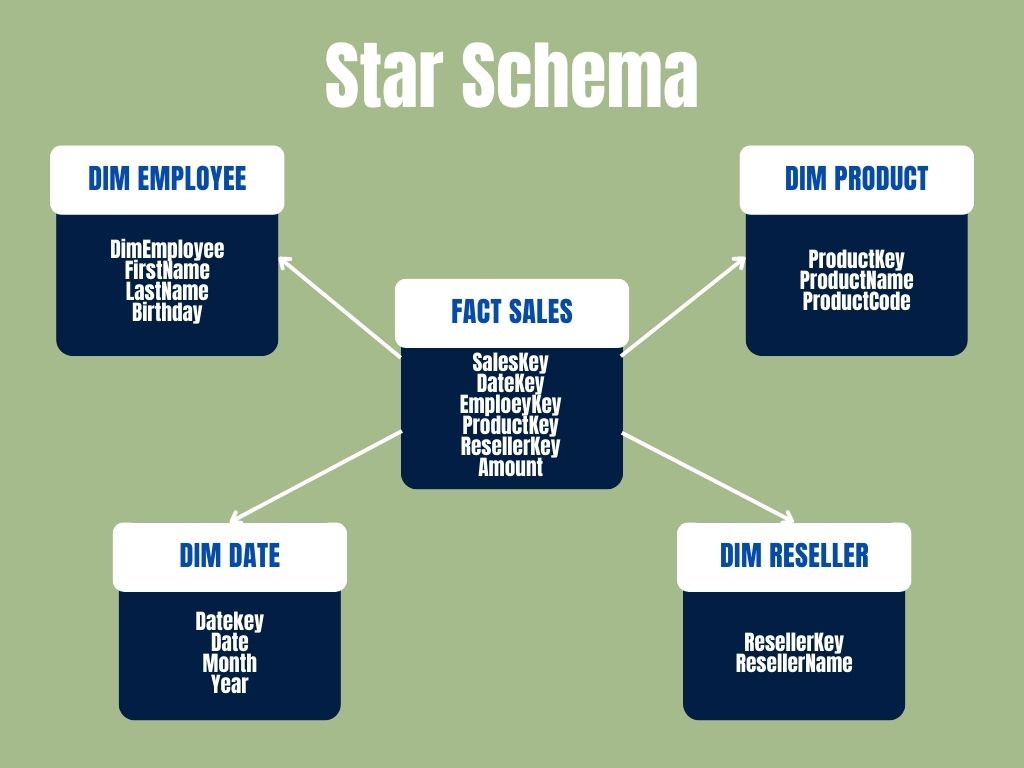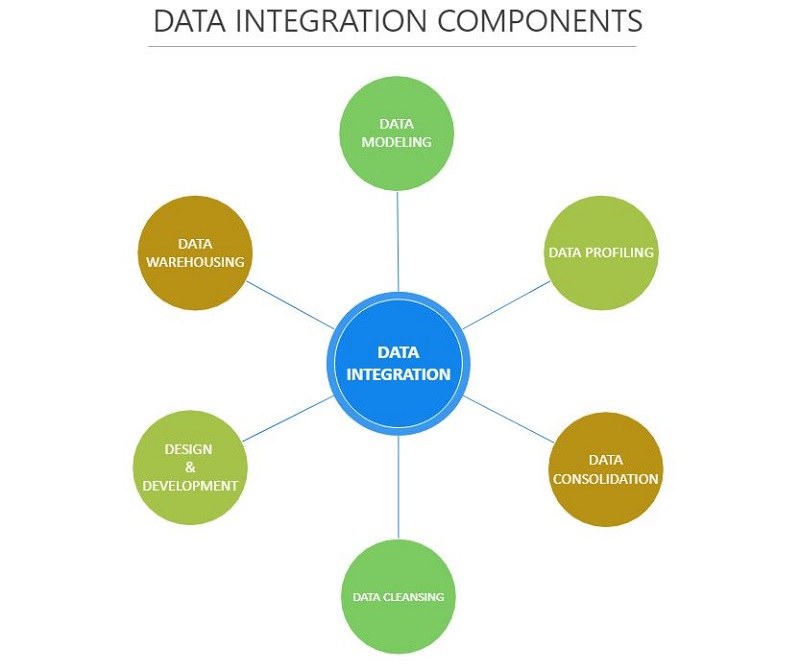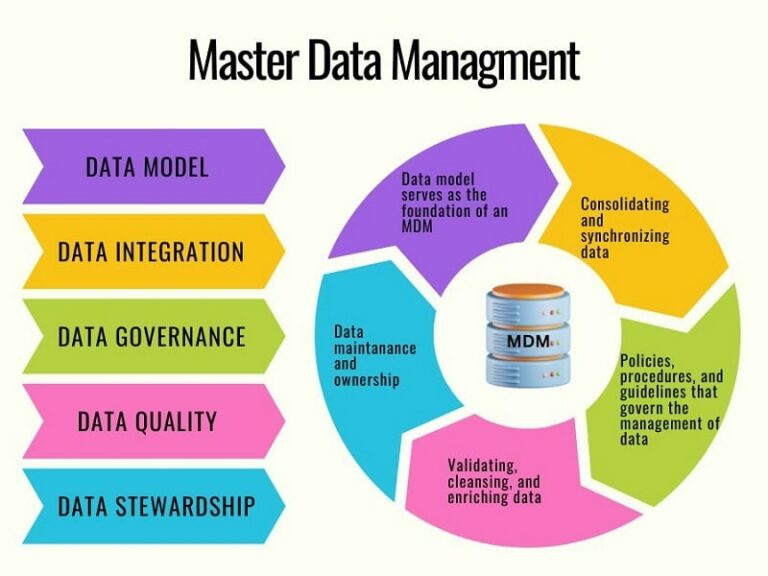The Importance of Data Integration for Business Intelligence and Analytics
I have been working as a database and business intelligence engineer for many years and I am fascinated by how the world is evolving in this space. Over years I understood the importance of data integration for business intelligence and analytics.
In particular, I am interested in the topic of data integration and how it’s increasingly becoming an essential aspect of Business Intelligence (BI) and analytics.
In this article, we’ll explore the exciting world of data integration, learn about its role in BI and analytics, and discover how it’s transforming the way businesses operate in this fast-paced, digital age.
Join me as we delve into the complexities of data integration and its impact on modern business operations.
The Importance of Data Integration for BI and Analytics
Data integration plays a pivotal role in facilitating effective BI and analytics by providing businesses with a unified and coherent view of their data landscape.
With the ever-growing volume and diversity of data sources, it’s essential to merge and transform this data into a structured, usable format.
Data integration bridges the gap between disparate transactional systems, ensuring that data from various sources is combined, cleansed, and aligned to create a single version of the truth.
Making business decisions based on real data is the key to success for every modern business.
By integrating data effectively, businesses can gain a holistic understanding of their operations, customer behaviour, and market trends.
This comprehensive view empowers decision-makers to identify patterns, trends, and correlations that would otherwise remain hidden in siloed data sources.
As a result, data integration fuels data-driven decision-making, allowing organizations to optimize their strategies, reduce costs, and drive innovation, ultimately leading to a more successful and competitive business.
Why Data Consolidation is Important?
You may ask why don’t I report directly from my CRM system.
Indeed, you can do it but what if you want to join some other customer data that is located in a different system? This could be Office 365, a call centre system, a marketing platform, social media platform or IoT devices.
Probably you would ask your data analyst to put all sources in one Excel or PowerBi dataset. But that’s not a good idea. Sooner than later you would be frustrated by the complexity of your report as the number of tables, links and measures would be overwhelming.
This complexity grows even further when more systems need to be integrated. Reports become more and more complicated and difficult to manage.
By consolidating and integrating data from these disparate sources, you can create a comprehensive, 360-degree view of their operations, customers, and market environment.
Usually, this happens by creating a star schema or snowflake schema in your data warehouse. The model has one fact table (transactions) and joining dimensions which are categorical tables, e.g. Customer, Order Type or Project.
Read more about the differences between a star schema and a snowflake schema.

This holistic perspective allows you to identify trends, spot anomalies, and uncover insights that may have been obscured by data silos.
Furthermore, integrating data enables teams across the organization to collaborate more effectively, as they are working with consistent, reliable information.
Ultimately, data consolidation is a crucial step in harnessing the power of data and transforming it into a strategic asset that sets your business apart from the competition.
What are the Challenges of Data Integration in BI and Analytics
In the context of BI and analytics, businesses often face several data integration challenges that can hinder their ability to derive meaningful insights from their data.
Let me share with you some of the most common challenges I’ve encountered in my experience working with data.
Data Quality
First and foremost, data quality is a critical issue that businesses must address.
Inaccurate, inconsistent, or outdated data can lead to misguided decisions and negatively impact the organization’s performance.
Ensuring data accuracy and consistency requires robust data validation, cleansing, and transformation processes during the integration phase.
It is easier said than done.
Quality usually depends on the source system you are taking it from. There are systems and ‘systems’.
Modern solutions have normally properly structured databases that are usually accurate and easy to understand.
On the other hand, old, outdated systems can be a big challenge as they don’t stand up to current standards.
Then, there is a process of data integration and consolidation where errors can occur too.
Data Silos – How to Integrate with Those?
Another challenge is the presence of data silos, which occur when data is stored in isolated systems or departments within an organization.
Data silos can impede the flow of information, limit collaboration, and result in a fragmented view of the business.
Breaking down these silos and integrating data from various sources is essential to gain a comprehensive understanding of the organization’s operations and making well-informed decisions.
But, how to do it?
Normally, this process involves making decisions by higher management to upgrade the system or output the data on a schedule to the network storage location where it can be consumed.
Based on my experience, data silos systems can be a real pain and they can slow down the whole process of data consolidation.
Data Security
Data security is also a pressing concern for businesses when dealing with data integration.
As data is transferred between systems and consolidated into a central repository, it’s crucial to implement strong security measures to protect sensitive information from unauthorized access or breaches.
This includes data encryption, masking, access controls, and regular security audits to ensure that data remains secure throughout the integration process.
By addressing these challenges head-on, businesses can overcome the obstacles that impede effective data integration and unlock the full potential of their BI and analytics capabilities.
Database integration developers should only have access to the development environment.
Data Integration Techniques for BI and Analytics
To support BI and analytics initiatives, you can leverage various data integration techniques, each with its unique advantages and use cases.
Let me introduce you to some of the most common techniques that can help organizations unlock the power of their data:
ETL (Extract, Transform, Load)
ETL is a traditional data integration method that involves extracting data from source systems, transforming it into a consistent format, and then loading it into a target system, such as a data warehouse.
ETL is ideal for scenarios where data quality and consistency are of the paramount importance of data integration, as it ensures that the transformed data is clean and ready for analysis.
ELT (Extract, Load, Transform)
ELT is a modern approach to data integration that prioritizes performance and scalability.
In this process, data is extracted from source systems and loaded directly into the target system before being transformed.
This method takes advantage of the processing power of modern data warehouses, allowing for faster data integration and reduced latency in the analytics process.
ELT is well-suited for handling large volumes of data and situations where real-time analysis is not a requirement.
Read about the main differences between ETL and ELT.
Data Virtualization
Data virtualization is a technique that allows businesses to access and analyze data from multiple sources without physically moving or transforming the data.
Instead, data virtualization creates a virtual, unified view of the data by pulling together data from disparate sources on-the-fly.
This approach reduces the time and resources required for data integration, making it ideal for situations where agility and flexibility are essential, such as when working with real-time or frequently changing data sources.
Real-Time Data Integration
Real-time data integration involves capturing and integrating data as it’s generated or updated, enabling businesses to access and analyze up-to-date information for faster decision-making.
This approach is particularly useful for organizations that require immediate insights to respond to rapidly changing conditions, such as monitoring customer interactions, tracking inventory levels, or analyzing real-time social media data. Example: displaying live bets during the Melbourne Cup.
Choosing the Right Data Integration Tools for BI and Analytics
Based on my experience, there are four major factors to consider when selecting a data integration tool.
Scalability
Scalability means increasing or decreasing computer resources as your business and data volume and complexity grow.
Choosing tools that can scale to accommodate this growth ensures that your BI and analytics capabilities remain effective, even as your data landscape evolves.
Luckily, most modern data integration tools like Azure or AWS have scalability built in.
Flexibility
Data integration tools must be able to handle various data formats, sources, and integration techniques.
This flexibility allows businesses to adapt their integration strategies as new data sources and technologies emerge, ensuring that their BI and analytics initiatives remain relevant and up-to-date.
This requirement can be a bit tricky for newly emerging integration platforms as those may not support some newer connectors for systems that are new in the business.
Again, the major data integration players, have most of the connectors, so there is not an issue to start integrating your systems from the word go.
Performance
The speed and efficiency of data integration can have a significant impact on the overall performance of your BI and analytics systems.
Selecting tools that deliver high-performance data integration allows for faster analysis and decision-making, empowering your organization to stay ahead in a competitive market.
Performance goes along with scalability. The moment you need better performance you scale up your resources. If you don’t need it any more scale down and decrease the cost.
This is how most of the cloud platform works these days and it is very convenient.
Security and Compliance
As data security and privacy concerns continue to grow, it’s essential to choose data integration tools that prioritize security and help your organization meet regulatory requirements.
This includes features such as data encryption, geographical location, access controls, and audit trails to ensure the protection of sensitive data.
Best Practices for Data Integration in BI and Analytics
Here’s a list of best practices that can help your organization achieve success with its data integration initiatives:
Defining Clear Data Integration Objectives and Requirements
Before embarking on a data integration project, it’s essential to establish clear objectives and requirements, such as the desired outcomes, key performance indicators (KPIs), and the specific data sources to be integrated.
This can be normally done by a Business Analyst who prepares a requirement document that outlines all-important project deliverables in a clear and concise format.
This clarity will help guide the selection of appropriate integration techniques and tools and ensure that your integration efforts align with your overall business goals.
Ensuring Data Quality Through Data Profiling, Cleansing, and Validation
Maintaining high data quality is paramount for meaningful analysis and decision-making.
Implement data profiling, cleansing, and validation processes during the data integration phase to identify and resolve data inconsistencies, inaccuracies, and duplicates, ensuring that your integrated data is clean and reliable.
Selecting the Right Data Integration Techniques and Tools
Choose data integration techniques and tools that best align with your organization’s specific needs, such as data volume, data formats, and desired analytics capabilities.
Consider factors such as scalability, flexibility, performance, data quality, and security when evaluating different options.
For example, if your organisation uses Microsoft for most of its services, selecting Azure Data Factory and Azure Synapse could be the right choice.
Implementing Data Governance Policies and Procedures
Establish data governance policies and procedures to ensure the proper management, usage, and protection of your data.
This includes defining data ownership, access controls, data lineage, and data privacy policies, as well as outlining roles and responsibilities for data stewards and data custodians within your organization.
Continuously Monitoring and Improving Data Integration Processes
Regularly monitor your data integration processes to identify potential bottlenecks, inefficiencies, or data quality issues.
Continuously refine and optimize these processes, incorporating new technologies and techniques as they emerge, to ensure that your data integration efforts remain effective and up-to-date.

Conclusion
Data integration with various disperse systems is not an easy task. The process usually involves having a dedicated analytics team that will take care of the whole process.
Data integration is more than just a technical process; it’s a strategic investment that can propel your business forward in today’s competitive landscape.
By selecting the right techniques and tools, ensuring data quality, implementing data governance policies, and continuously monitoring and improving integration processes, you can unlock the true value of their data and gain a competitive edge in the market.
As we’ve touched upon various aspects of data integration in the context of BI and analytics I hope you are now closer to understanding the importance of data integration in your business.
I encourage you to explore other supporting posts and resources for more in-depth information on specific data integration topics and technologies.
So, don’t stop here—continue your journey into the realm of data integration and BI, and empower your business to harness the full potential of its data.



